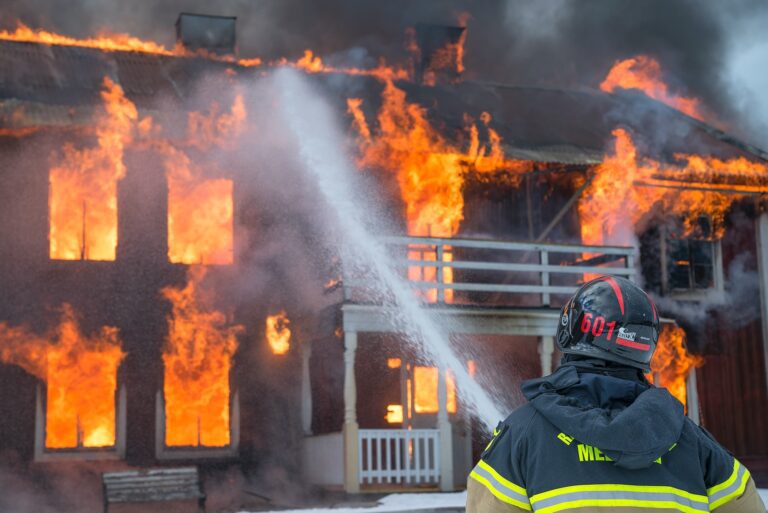A house fire is a traumatic and life-altering event, leaving behind not only damage to your property but also a lingering sense of loss and uncertainty. In the aftermath of such a tragedy, returning your home to its pre-fire state may seem like a daunting, if not impossible, task. Rest assured, with the right guidance, resources, and professional support, even the most extensive fire damage can be repaired, and the process of rebuilding can pave a path toward healing and regaining a sense of normalcy.
Understanding the steps involved in repairing damage after a house fire is essential to ensure a safe and efficient return to your home. This article will shed light on the common repairs needed, the costs associated with fire damage restoration, and how homeowners insurance can help. We’ll explore ways to eliminate lingering smoke odors and offer tips for future fire prevention. Additionally, we will provide a detailed breakdown of the rebuilding process, the fire damage repair process, and the estimated time frame for completion.
Combining a wealth of information and practical advice, this comprehensive guide aims to empower homeowners with the knowledge needed to navigate the aftermath of a house fire confidently. By focusing on factual, informative, and engaging content, this article delivers an exceptional user experience that provides invaluable insight into the complexities of fire damage repair and restoration. With determination, support, and the right expertise, you can successfully restore your home and recover from the distressing impact of a house fire.
How to Repair Damage After a House Fire: A Comprehensive Guide
In the face of fire damage, arming yourself with knowledge and guidance will enable you to approach the daunting task of repairing your home with a clearer understanding of the process. This article covers essential topics, from common repairs to tips for future fire prevention, providing helpful insights for homeowners embarking on the journey toward restoration and recovery.
1. Common Repairs After a House Fire
The extent of damage caused by a house fire varies depending on the fire’s severity and duration. Typical repairs include:
a. Structural Repair or Replacement: Damage to walls, ceilings, floors, and support beams may require repair or replacement to restore the home’s structural integrity.
b. Electrical System Repairs: Electrical wiring, outlets, and panels may need replacement or repair due to damage or exposure to water during firefighting efforts.
c. HVAC System Repairs: Heating, ventilation, and air conditioning systems can be damaged by either fire or water and may require professional attention.
d. Smoke and Soot Removal: Smoke and soot can cause respiratory issues and damage surfaces and belongings; professional cleaning and removal are essential.
e. Water Damage Restoration: Water used to extinguish the fire may have caused additional damage, necessitating professional water extraction, drying, and repair.
2. How Much Does Fire Damage Restoration Cost?
The cost of fire damage restoration depends on factors such as the fire’s severity, the size of the affected area, and the extent of structural and content damage. On average, homeowners can expect to spend between $3,000 and $30,000 on restoration services. Hiring a reputable damage restoration company, like Sentry Restoration, can help ensure the process is done efficiently and professionally, minimizing long-term costs.
3. Will Homeowners Insurance Help Cover Costs?
In most cases, homeowners insurance will cover costs associated with fire damage restoration, including repairs, replacement of damaged belongings, and cleaning costs. It’s crucial to review your specific policy to determine coverage limits and requirements. In the aftermath of a fire, contact your insurance company promptly to initiate the claims process and begin the necessary documentation.
4. How to Get Rid of Fire Smoke Smell in a House
Lingering smoke odors can be challenging to eliminate but are essential for your comfort and well-being. Professionals utilize specialized equipment and techniques, including:
a. Air Filtration Devices: Devices like HEPA air scrubbers remove smoke particles from the air, reducing odors and improving indoor air quality.
b. Ozone Generators: Ozone generators produce ozone gas, which reacts with smoke molecules and breaks them down, effectively neutralizing smells.
c. Thermal Fogging: By releasing a fog-like mist that penetrates porous surfaces, thermal fogging effectively neutralizes odors within walls, ceilings, and floors.
d. Odor Counteractants: Specially formulated chemical agents can be applied to affected surfaces, neutralizing odors and providing long-lasting freshness.
5. Tips for Future Fire Prevention in the Home
Proactive measures can significantly reduce the risk of fires in your home:
a. Install and Maintain Smoke Alarms: Ensure you have functioning smoke alarms on each floor and in bedrooms, testing them monthly and replacing batteries as needed.
b. Develop a Fire Escape Plan: Formulate an escape plan with multiple exits, designate a meeting point, and practice with your household regularly.
c. Keep Extinguishers Accessible: Store fire extinguishers in high-risk areas like the kitchen and garage, and know how to use them properly.
d. Regularly Inspect Electrical and Heating Systems: Routine inspection and maintenance of electrical wiring, outlets, and heating appliances can prevent fires caused by electrical malfunctions.
6. 8 Steps to Rebuilding a Fire-Damaged House
Rebuilding after a fire is a complex process that involves several crucial steps:
1. Call the Insurance Company: Report the fire immediately and get guidance on how to proceed with the claims process.
2. Assess Your Home’s Structural Damage: Hire a professional inspector or engineer to ensure structural safety before beginning repairs.
3. Make Sure the Property Is Secured: Board up windows and doors, and install a temporary fence to secure your property from potential vandalism or theft.
4. Address Structural Repairs First: Repair or replace damaged support beams, walls, floors, ceilings, and roofing materials to restore structural integrity.
5. Inspect and Repair the Electrical System: Licensed electricians should assess and repair any electrical system damage before proceeding with other repairs.
6. Address Problems Specific to Fire Damage: Partner with a professional restoration company to handle smoke and soot removal, odor elimination, and water damage clean-up as needed.
7. Clean Up Room by Room: Tackle repairs and clean-up on a room-by-room basis, starting with high-priority areas like kitchens and bathrooms.
8. Document Everything From Start to Finish: Keep detailed records and photographs of the entire restoration process for insurance purposes and future reference.
Conclusion
Repairing damage after a house fire can be an overwhelming task, but with the right information and support, it is achievable. This comprehensive guide aims to provide homeowners with the knowledge and motivation needed to embark on this challenging journey. By understanding the steps involved, reaching out to professionals like Sentry Restoration for expert damage restoration services, and being proactive in fire prevention, homeowners can successfully restore their homes and regain a sense of security and stability.



